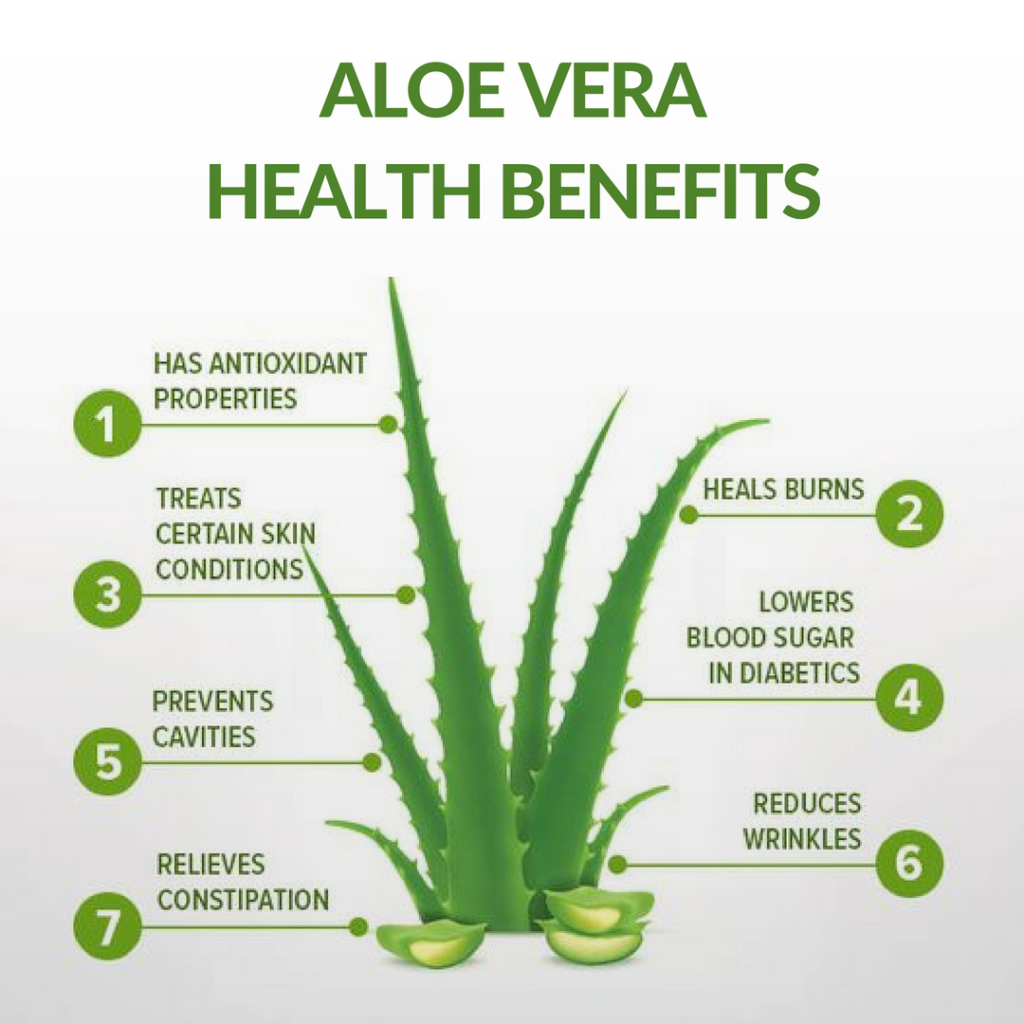Aloe Vera is a succulent plant with thick, fleshy, spiky green leaves. Two different products are derived from the plant, a gel, and a juice or sap, and each of these is widely promoted for conferring various health benefits. The centre of the plant leaf contains a mucilaginous tissue called the aloe vera gel, while an intensely bitter, yellow latex, referred to as the juice, is produced by the peripheral bundle sheath cells.
Aloe Vera and Its Healthy Benefits
This juice contains anthraquinones that are responsible for producing a laxative effect. Natural aloe vera gel does not contain anthraquinones, however production of the gel, through a total leaf extract may include this property. Aloe vera contains 75 potentially active constituents including vitamins, enzymes, minerals, sugars, lignin, saponins, salicylic acids and amino acids. It is claimed that the polysaccharides in aloe vera are responsible for many of its health benefits.
The aloe vera mucilaginous polysaccharide is a long chained molecule comprised of interconnected mannose and glucose molecules. The aloe vera polysaccharide may be a variety of lengths, with different healing properties associated with its different sizes. The cutting, or breaking of the aloe vera leaf results in the release of enzymes that begin to break down the polysaccharides into simpler molecules. Breakdown also occurs under other stress conditions such as heat and the presence of acid. This may result in a loss of the plant’s healing properties. A consistent production process is needed to avoid the degradation of the polysaccharides and preserve its natural biological effects.
aloe vera benefits for men
Aloe vera is understood to act as an intracellular antioxidant and free radical scavenger. It is also believed that aloe vera polysaccharides bind to available vitamins in the digestive tract that also have antioxidant properties. This helps to increase the bioavailability of these vitamins. For example the overall bioavailability of vitamin C may increase up to three times when consumed with aloe vera gel, and this high level of availability may remain for more than 24 hours. Additionally, aloe vera has the ability to decrease the transepithelial electrical resistance of intestinal epithelial cell monolayers, enhancing paracellular transport across the intestinal epithelial cell.
benefits of aloe vera drink
Aloe vera is often promoted as a wound healer. The polysaccharide glucomannan is believed to interact with the growth factor receptors on fibroblasts, stimulating their activity and proliferation. They also encourage wound contraction through enhancing wound tensile strength and collagen turnover in wound tissue. It is also believed that aloe vera stimulates angiogenesis, a process required in the formation of new tissues. This may be a contributing factor to aloe vera’s ability to permit faster healing of burn wounds, as are the plant’s anti-inflammatory properties.
The anti-inflammatory action of aloe vera may be through the inhibition of the arachidonic acid pathway via cyclo-oxygenase, which inhibits the production of prostaglandin E2. The enzymes carboxypeptidase and bradykininase also help to facilitate this anti-inflammatory process.
how to use aloe vera for inflammation
Acemannan is one of the main polysaccharides found in aloe vera. It is reported to have immunomodulatory effects through activating macrophages, enhancing cytokine release, stimulating activity between macrophages, T-lymphocytes and B-lymphocytes, and enhancing the production of cytotoxic T-lymphocytes. It has been seen to stimulate the synthesis and release of interkeukin-1 and tumour necrosis factor from macrophages, leading to necrosis and regression of cancerous cells.
The overall effectiveness of aloe vera on promoting health in the human body is hugely dependent on the polysaccharides found in the plant leaves. Studies have found that plants in different geographic locations may have a different composition, with differing numbers and types of polysaccharides contained therein. The discovery and isolation of these polysaccharides have given rise to a new class of dietary supplements referred to as glyconutrients.
The extraction method and preparation of aloe vera products can have an effect on the ability of the product to provide any benefit to the patient. It can be certain that aloe vera does provide health benefits to those who use it, especially through its anti-inflammatory and immunomodulatory properties, however its mechanism of action is not always clear.





